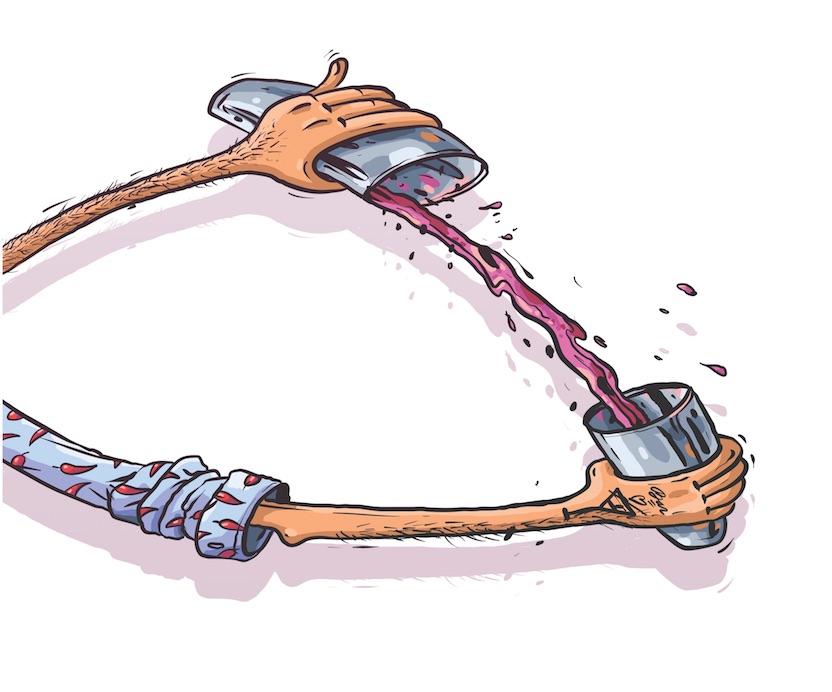Barcelona’s Cocktail Evolution is as impressive as its architecture and gastronomy. The Catalan metropolis, situated on the northeastern coast of Spain, is the second-largest city in the country, known for more than just its sunny beaches or Antoni Gaudí’s iconic works like Sagrada Família, Park Güell, and Casa Batlló. While Barcelona has long impressed the world with its local gastronomic scene, its creativity extends beyond food. Take, for instance, the restaurant Tickets, where renowned chef Albert Adrià reimagines tapas in a uniquely innovative way. But this progressive spirit isn’t limited to cuisine. Where does the origin of the local cocktail culture lie? And how did Barcelona come to be considered the new cocktail capital of Europe?
In January of this year, Christine Sismondo, known to the professional community for her book “America Walks into a Bar,” came up with an interesting headline, questioning how Barcelona became the main cocktail metropolis of the world or at least Europe. The American perspective tends to be somewhat selective in this regard, as seen in the Spirited Awards at Tales of the Cocktail, which typically honors the best bars in the United States and separately, the best international bars. However, setting aside this fact and returning to what Sismondo wrote in her article for the Toronto Star, it’s clear that she drew from the renowned World’s 50 Best Bars list. For the first time in the history of these awards, the winner wasn’t located in London or New York. It was the Paradiso bar, which evidently enchanted countless judges. Yet, one bar isn’t the sole indicator of Barcelona’s cocktail maturity. This is further confirmed by additional data, where within the top ten of this ranking, two more Barcelona bars – Sips Drinkery House and Two Schmucks – stand out. They point to an extraordinary reality: bartender migration and its influence.
Reflecting on the results of the World’s 50 Best Bars in 2019, we find that Singaporean bars dominated that year. Beyond the creative environment, their success could also be attributed to the relocation of numerous talented bartenders who previously worked in London. Similarly, we might find a similar scenario in Barcelona, where we could figuratively speak of Italians heading south. From rainy London, the Tuscan native and founder of Paradiso bar, Giacomo Giannotti, made the move, as did the far more famous Simone Caporale, who is one of those behind the concept of Sips. However, once you start uncovering these connections, you suddenly see them everywhere. Thus, it’s no wonder that even the origins of the cocktail culture in Barcelona are the result of migration.

Boadas
The legendary Boadas bar in Barcelona is a chapter in itself, inseparably linked with its founder, the cocktail artist Miguel Boadas. Circumstances always seemed favorable around him, particularly during his childhood, which predetermined his path towards professional bartending. Miguel Boadas Parera was born on a clear morning on October 24, 1895, in Havana, Cuba. He was the first child of Miguel Boadas Guinarta and Josefa Parera Marti, Catalan immigrants who came from the beautiful coastal town of Costa Brava. Miguel was born for bartending. His parents owned a small tavern in Havana on Del Empedrado Street, the same street where the doors of La Bodeguita del Medio later opened. It was there, from a young age, that Miguel assisted his father behind the bar until he left with his mother back to Spain while his father continued working in Cuba. However, when he reached thirteen, he returned to his father. When he came back, his father realized his natural inclination for bartending and sent him to learn from his cousin, the esteemed member of the Centre Catalá de l’Havana, Narcís Sara Parera. This part of the family owned a bar known as Piña de Plata, which gained fame as the bar and restaurant La Florida and later became renowned as El Floridita.
Miguel Boadas lived in a truly cosmopolitan city at that time and served his cocktails to famous personalities. There was no doubt that he was destined for this craft, no matter where he worked. However, one of the defining encounters for Miguel was collaborating with another Catalan native, Constantino Ribalaigua Vert, who left an indelible mark in cocktail history, among other things, for his unique and varied preparation of the Daiquiri. Constantino Ribalaigua subsequently bought the establishment from Boadas’ relatives when they decided to retire and return to Madrid. At that time, it was not surprising to encounter Miguel in other places, such as the presidential box at the Havana Jai Alai court or the elegant bar at the local Yacht Club.
In 1925, at the age of 33, Boadas decided to return to Spain. Shortly after his return, he visited his family in Lloret de Mar, where he met his bride, María Ribas Utse, whom he married on May 10, 1927. These new circumstances also influenced whether he would stay permanently in Spain. He settled in Barcelona and began working at the Moka bar. Later, he also worked at establishments like Núria, Maison Dorée, and Canaletas Bar, where a bar was specifically built for Boadas and his assistants.
However, a milestone for Barcelona was his decision to open his own bar. Boadas Cocktail Bar was opened in October 1933 on Tallers Street, in a corner building adjacent to the popular promenade La Rambla. It was one of the first purely cocktail bars in Spain, and to this day, his daughter Maria Dolores Boadas carries on his family legacy. On the occasion of the bar’s 50th anniversary, she published a collection of her father’s recipes. Yet, Miguel Boadas’ significance wasn’t limited to just running the bar. As a leading figure in bartending, he founded the Spanish Bartenders Association, Club Barman, in 1962, serving as its president until his death in 1967. He also played a crucial role in preserving the unique throwing technique in cocktail preparation, where the liquid flows between different parts of the shaker.





